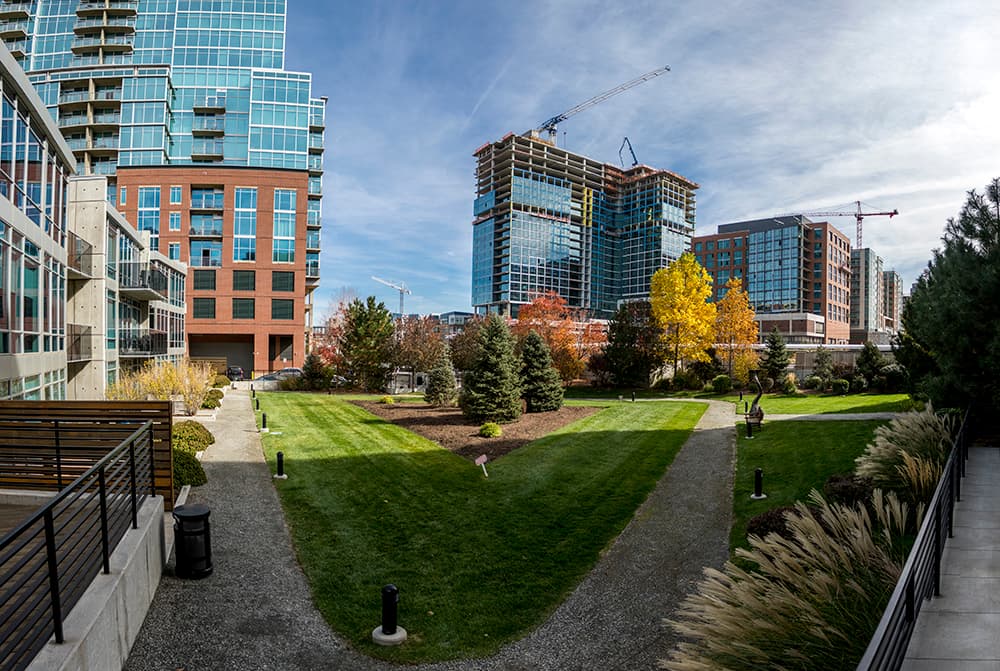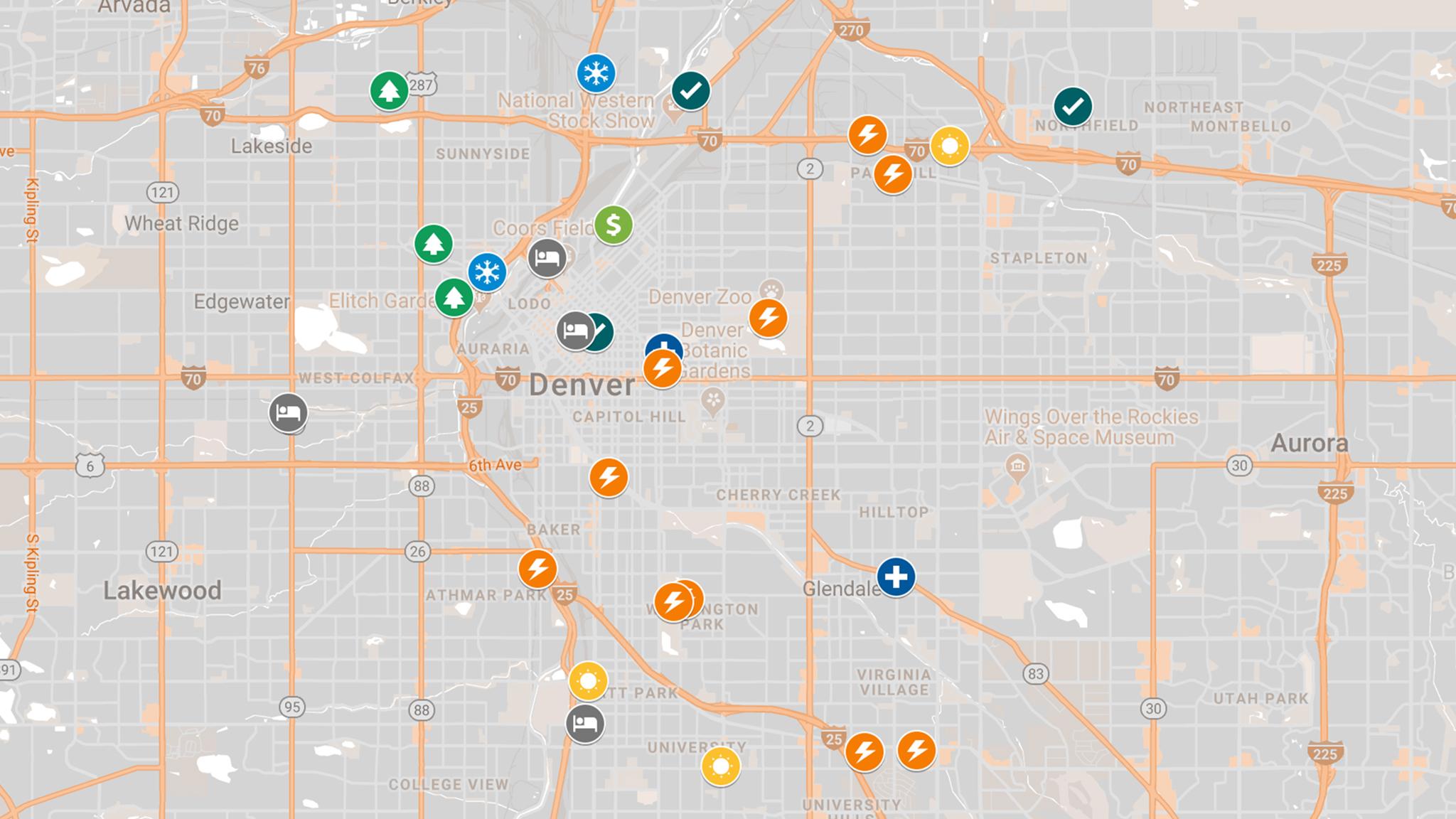When voters decided to pass a green roof requirement in Denver, the city had to figure out how they would get existing buildings and new buildings to comply.
They ended up with compliance options that include things like not having a green roof -- and, so far, no green roofs have been built.
The process took about a year and involved a bunch of people in a room figuring out how to best move forward with this new law. It ended in October 2018, when Denver City Council officially adopted new compliance rules. As a result, the law was also rechristened with a more accurate name, green buildings ordinance. The regulations are aimed at helping energy efficiency and decreasing temperatures citywide.
Brandon Rietheimer, who along with nine other people helped collect signatures and put the measure on the 2017 ballot, said the idea behind the bill was always about addressing climate change. He also knew that it could need work if it passed. (Even the ballot language proved tricky. As Rietheimer noted, there was one specific issue with the use of "retain" and "detain" for water). He said he was happy with the way it was rewritten.
"It ended up being a better policy," Rietheimer said. "I think we got a lot more buildings involved that we originally would have."
He didn't want a law that would be unfair to some buildings and end up targeting ones that couldn't afford to make the changes.
"I felt very happy walking away from that (process)," Rietheimer said. "We had tried to do everything that we could to make it workable with everyone and make it have some teeth."
More than two years after the law was approved by voters, a list of projects required to comply with the law shows only three building owners intended to do so by adding green spaces.
And of the three, only one included plans for vegetation on the roof (which, again, is not required under the new rules).
The law requires a green compliance option for new buildings 25,000 square feet or larger and additions of 50,000 square feet or larger. These requirements are also applied to existing buildings of the same size if the owner wants to replace the roof or if they're building an addition.
"So an existing building out there right now that's not doing anything, they just are the same building that they were last year as they are this year, they are not out of compliance," Laura Swartz, a spokeswoman for Community Planning and Development, said. "They just don't have to meet it yet until they come in to replace the roof."
These maps show the 34 projects that received permits in 2019 and were required to comply with the green building ordinance because of their size. The top map shows the compliance option, while the bottom one shows whether it was a new building or an existing one.
The city had 34 permitted projects that needed to meet some or all of the green building ordinance last year, including new and existing buildings. Swartz said since building permits for these projects were issued in 2019, most are still likely under construction.
Green spaces being built to comply with the law include one at The Gardens at St. Elizabeth, an elderly living facility, which planned green space at grade (ground level) and a 600-square-foot vegetated roof as an addition to the existing tower. The other two green spaces will be ground-level installs, including one at Regis University and one at a Rockies parking lot on Wazee Street near Coors Field.
"It doesn't have to be on the roof. It can be on the property, anywhere," Swartz said.
There is a variety of options besides a green roof, including a cool roof.
All new buildings larger than 25,000 square feet must have what's called a cool roof, which is meant to reflect sunshine rather than absorb it.
Existing buildings of the same size or larger where the owner is replacing the roof will be required to include a cool roof. CU Denver urban planning professor Austin Troy said these are roofs equipped with material that's reflective.
"That's a pretty low-cost approach," Troy said. "It's one of the easiest in terms of heat island mitigation for a city."
In addition to the cool roof, here are the compliance options for the green building ordinance:
- a green roof or space
- paying into the green building fund
- on-site solar panels
- buying off-site solar energy
- obtaining green building certification
- joining the Energy Program
- energy conservation
Combining some of the options is also allowed.
Swartz said these options mean more buildings will be able to fulfill green improvements voters wanted when the law was passed and help reduce the urban heat island effect.
Troy said that while this is the law's intent, it's still too early to know what kind of impact it will have. But he said basic physics shows plants, trees, grass and other vegetation can help "mitigate the heat island effect." He added that it's "impossible" to say how many buildings would need to comply with the law to have a significant impact on the city's heat island effect, but more is obviously better.
He provided a simple example: A tree providing shade helps with heat in the city.
"So the more we have of it, the more cool the town should be," Troy said.
Swartz said the city had expected most building owners would choose to pay into the green building fund to be in compliance. But that hasn't happened. Instead, she said, most have opted for a mixture of the compliance options.

"That was the intent of this," Swartz said. "To not just get green roofs, but also get solar panels, also to get more people using renewable energy. We have a goal as a city to have all new construction be net-zero energy by 2035. In order to get there, you need buildings that are being designed to be energy efficient, that are being designed to be fueled by renewable energy purchased from Xcel solar panels, wind turbines."
The most popular compliance option for projects last year was participation in the energy program, though this option is only available for existing buildings. These buildings commit to meeting energy benchmarks including reducing energy use and committing to using solar energy.
Among new buildings, there was a mix of green space, green building certification and on- and off-site solar to meet the law's requirements. Some projects only had a cool roof because they were exempt from additional compliance options due to their size. Existing residential buildings that are 25,000 square feet or larger that are five stories or less, or less than 62.5 feet in height are exempt; similarly, new residential buildings that are five stories or less and less than 62.5 feet in height are also exempt.
Swartz said she's not sure how many green roofs existed in Denver before the law was passed. The city didn't track them since they hadn't previously permitted green spaces for buildings.













